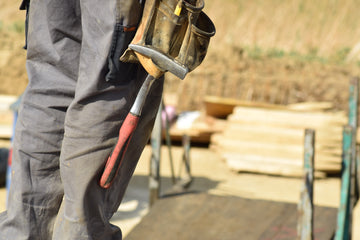Traditional Crafts: Sustainability and Future Perspectives
As a result of globalization and technological advances, handicrafts are increasingly coming under pressure. Instead of buying from the craftsman around the corner, more and more people are turning to mass-produced goods from abroad. But what does this traditional handicraft still have to offer in our time?
Craftsmanship not only stands for centuries-old knowledge, but also for the conscious use of resources. As the saying goes: "If you don't know where you come from, it's hard to know where you're going."
At a time when sustainability and slowing down are becoming increasingly important, traditional craftsmanship is experiencing a real renaissance.
Techniques that were once considered outdated are now in demand again. Whether it's blueprinting, thatching or making musical instruments - they are all enjoying a new appreciation.
In 2003, UNESCO adopted a convention for the protection of intangible cultural heritage, in which Germany has also been increasingly participating since 2013. Traditions such as the Vogtland musical instrument making or the wickerwork trade are exemplary of the bridge between tradition and modernity.
Regional craftsmanship – deeply rooted and innovative
In some regions of Germany, old craft techniques have survived to this day. Markneukirchen in the Vogtland is known for its musical instrument making, while blue printing has a long tradition, especially in Upper Lusatia and Münsterland.
These techniques use regional and natural raw materials, such as indigo in blue printing, and rely on resource-saving processes. What is particularly noteworthy is that tradition and innovation go hand in hand. Old processes are adapted to modern needs in order to ensure their survival in the future.
Sustainability and tradition as success factors
Today, more than ever, craftsmanship stands for sustainability. Old techniques, such as the use of natural lime mortar or hand-blown glass, do not use synthetic materials or energy-intensive industrial processes. Instead, craftsmen rely on local raw materials and long-lasting products.
This attitude fits perfectly with the modern trend of the circular economy, in which repair and reuse play an important role. Products such as handmade furniture or musical instruments are often passed down through generations, thus contributing to more conscious consumer behavior.







